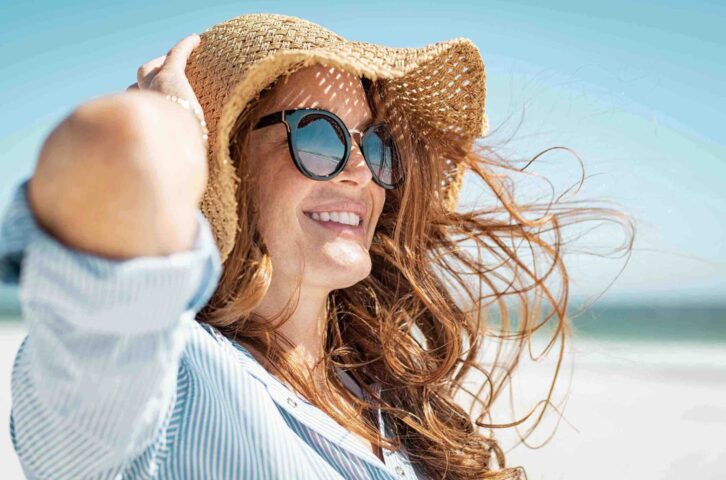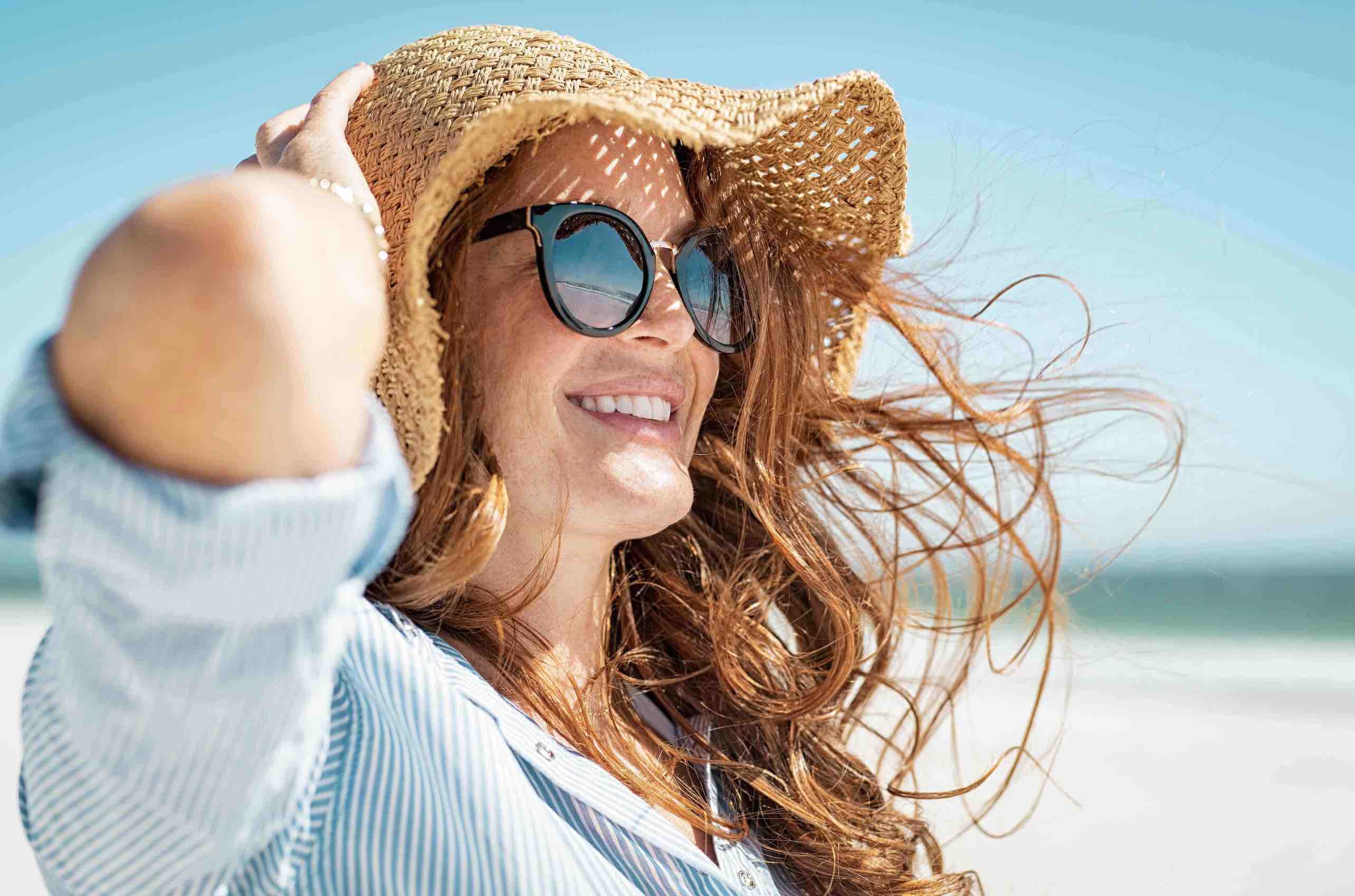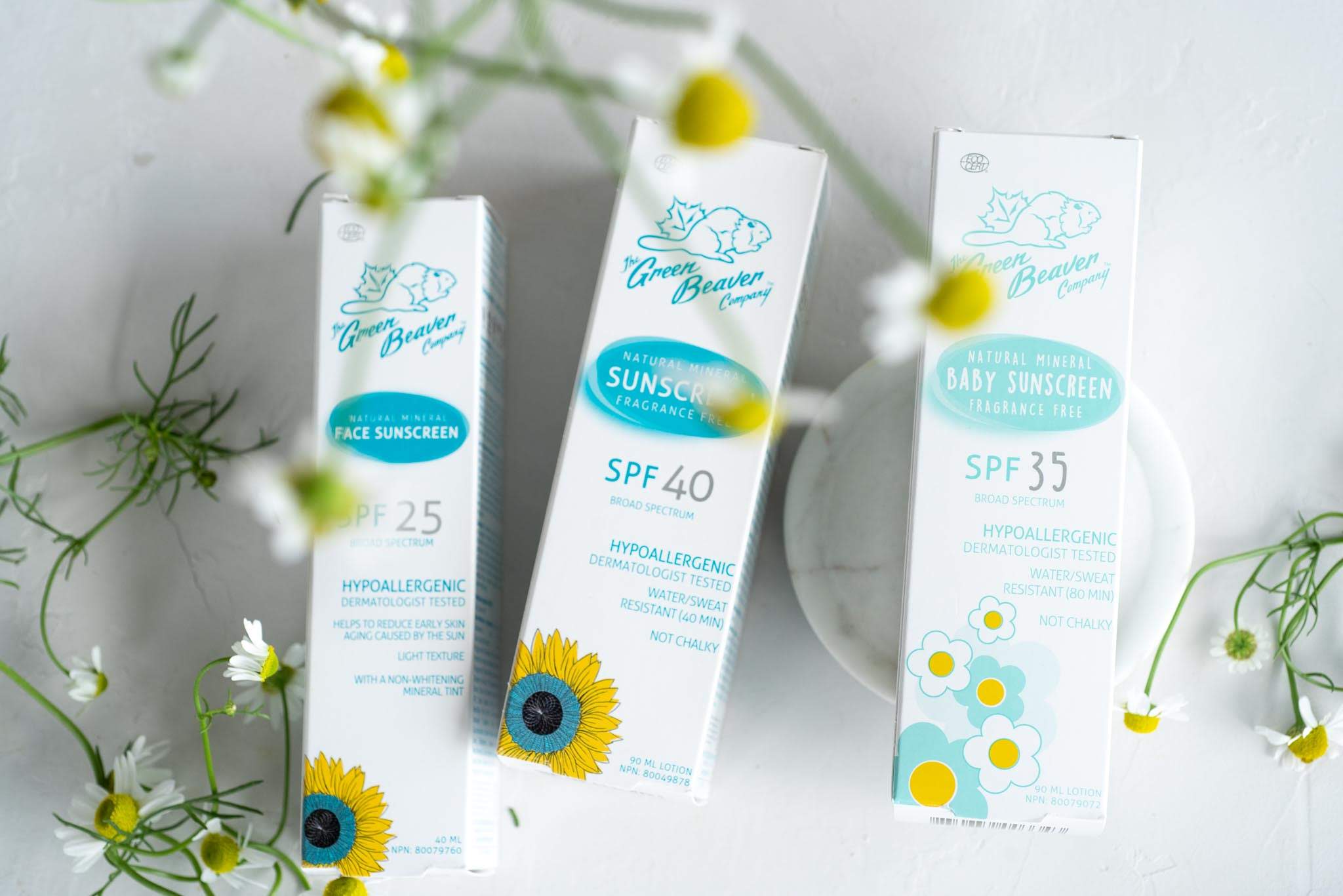How To Be In The Sun Naturally: Demystifying SPF

During the first official week of summer, Dusk and Dawn are lovers who only meet once per year. In the Northern hemisphere, this is when the sun travels its longest path through the sky, giving us the longest hours of daylight. This the season for sunshine. As we celebrate this time of abundance and summer lovin’, it is important to remember the most important thing about going into the sun: protection!
Healthful rays of sunshine brighten our mood and provide vitamin D. It also stimulates the development of nitric oxide, an essential component to cardiometabolic health. There is some evidence to suggest that sun exposure may reduce our risk of obesity, depression, and propensity for illness. But as the sun warms the earth and provides both life and light, it also has the capacity for harm. Rays from the sun is the overriding cause of photoaging: cumulative detrimental effects caused by ultraviolet light, also known as UV radiation. UV exposure is also directly linked to DNA cell damage and skin cancer. The sun radiates UV on a continuous spectrum. The purpose of this article is not to bash the sun—quite the opposite—but to provide insight into maintaining a healthy relationship with our favourite star in the sky.

What is Ultraviolet (UV) light?
UV light is electromagnetic radiation with varying wavelengths. Put simply, wavelength affects its penetrative ability. There are three different relevant categories of UV, each with different wavelengths: UVA, UVB, and UVC. UVC is largely blocked by our planet’s atmosphere, but UVA and UVB are abundant on the earth’s surface. UVA accounts for 99% of the ultraviolet light that reaches us. Where the ozone layer is thinner, UVB radiation reaches the ground, resulting in detrimental effects for us earthlings.
UVB radiation penetrates the upper dermis (skin layer) and results in DNA damage, allergic reactions, and burning.
UVA radiation penetrates the skin more deeply than UVB. It stimulates the synthesis of melanin and is thought to inhibit the immune system; it damages nucleic acids (cells), proteins, and lipids, and is highly responsible for oxidative stress and free radical damage in the skin. UVA radiation affects the skin by damaging collagen, elastin, and fibroblasts—photoaging.
Though both are linked to skin cancer and affect aging, a trick to remember the main differences is UVA = Aging, UVB = Burning.
What is SPF?
The SPF of cosmetics and skincare, the Sun Protection Factor, is a measure for skin protection against UVB radiation. SPF is complicated and is affected by a multitude of factors, including how much is applied, the skin type of the wearer, degradation of ingredients, and environmental factors. There is no one-product-fits-all for everybody. Additionally, SPF does not always indicate protection against all types of UV light. In Canada, for protection against both UVB and UVA, look for Broad Spectrum on the label.
Put simply, SPF is how many times more UV an individual may be exposed to before getting a sunburn. For example, if you have average-toned skin and you burn after fifteen (15) minutes, a sunscreen with an SPF of 30 will let you stay in the sun for 450 minutes, or 7.5 hours. However, this with a UV level that remains constant, and is not subject to environmental stressors such as sweating, swimming, or moving around. Those with fairer or darker skin will have different tolerance levels. Additionally, in real life we very rarely apply the correct amount of sunscreen, so additional measures should be taken for the best possible protection.
What is the difference between Chemical/Organic and Physical/Inorganic Sunscreen? Which is better?
In some sunscreens, active ingredients are designed to absorb and transform UV light (to heat) before it reaches the skin. These are chemical sunscreens, also known as organic sunscreens.
The active ingredients found in natural brands are most typically zinc oxide and titanium dioxide. These are metallic particles that both absorb and bounce the light away (similar to a mirror or suit of armour). Formulas with these ingredients are called physical, or inorganic sunscreens. The term inorganic comes from the fact the active ingredients, zinc oxide and titanium dioxide, are non-carbon-based.
While there are pros and cons to both types of sunscreens, at Kolya, we prefer physical (inorganic) sunscreens for their efficacy and proven safety to our bodies and the environment. These minerals form a protective barrier to reflect harmful UV rays before they make contact with the skin.
How much sunscreen do I need to use?
Much like chemical sunscreens, physical sunscreens are working hard to refract or absorb the sun’s rays. The harder you’re working, chances are, the harder your sunscreen is working too. If you’re frolicking, sweating, swimming, or otherwise moving around a lot, the formula is going to break down more quickly. This is why it’s important to re-apply at least every 2-4 hours. Those working indoors or not as active may get away with less frequent application. If your bottle is running low, it’s better to use a little bit of sunscreen rather than none at all. In SPF testing, 2 milligrams are applied per centimetre of skin. So for the same coverage that’s listed on the bottle, apply ¼ teaspoon to the face. This is approximately a nickel-sized dollop. For the entire body, approximately a shot glass-sized amount will do. It’s important to apply at least fifteen minutes before direct sun exposure, no matter what type of sunscreen you wear, because the product needs time to settle on your skin, dry down, and form an even protective layer.
What about the SPF in my makeup? How do I wear makeup with sunscreen?
Makeup with sun-protective qualities is great as a supplement to your everyday sunscreen wear, but it’s not enough to stand on its own: powdered makeup is not applied thickly or evenly enough, and even then, SPF makeup is not always certified as broad-spectrum. So while it may protect you from getting a burn, it is not guaranteed to protect you from the aging effects of UVA radiation.
In applying your sunscreen, it’s best to work in layers. We work from the product with the thinnest consistency up to the thickest. Apply your daily skincare (such as moisturizer) and allow it to absorb. Apply sunscreen and wait approximately five to eight minutes for it to dry. Then proceed with your makeup routine.
What if I don’t feel comfortable wearing sunscreen?
There are additional ways to protect yourself. Star Kolya member Amy has had a rocky relationship with the sun. “I’ve transformed from a sunbather to a sun avoider,” she says. “It’s been a natural progression.” Having once slathered herself in tanning oils and tan enhancers, and even using aluminum sun reflectors to soak up as many rays as possible, Amy has embraced a healthy balance between summer love and shade. “I still love the sun. I bask in its healthful rays in the early morning or late afternoon.”
If you prefer not to use SPF, opt for alternative protection: choose clothing with a tight weave and hats with wide brims (a four inch brim or larger is best) all the way around. Donn your oversized rockstar sunglasses, and if you’re feeling extra fancy, carry a parasol or a scarf. But it’s not always practical to wear heavy, opaque clothing in the heat of the summer. If you dress lightly, be certain to apply sunscreen, seek shade often, and stay hydrated. Sun exposure is mostly inadvertent, meaning it comes from driving from place to place, running to the store, and other daily comings-and-goings, so incorporating sun care into your daily ritual is your best defense.

Here are some of our favourite physical sunscreens:
Green Beaver Natural Mineral Face Sunscreen SPF 25
This proudly Canadian sunscreen is formulated especially for the face. It is hypoallergenic, ECO-cert, and reef-safe.
Caribbean Solutions Sol Guard SPF 30
Our most popular sunscreen. Children’s versions are also available, and all formulas are reef-safe.
Eminence Lilikoi Mineral Defense Sport Sunscreen SPF 30
This new sunscreen is especially formulated to be reef-friendly with the same skin-loving ingredients we know and love from Eminence.
Of course, the sun is a wonderful thing. It provides light, warmth, and life, and after long winters it’s great for our mental health to get outside and enjoy the summer rays. Sun exposure gives us precious vitamin D and nitric oxide for our overall wellness. It’s possible to have too much of a good thing, though, so sunscreen is essential to keep ourselves protected from the dangers of sun exposure. Proper precautionary measures can minimize the risks of burns, cancers, hyperpigmentation, and premature aging. Happy Summer!

References:
Yarosh, Daniel. “The New Science of Perfect Skin: Understanding Skin-Care Myths and Miracles for Radiant Skin at Any Age.” Broadway Books. 2008.
Janeš, Damjan and Kočevar Glavač, Nina. “Modern Cosmetics: Ingredients of Natural Origin: A Scientific View.” Vol. 1. Širimo Dobro Besedo, d.o.o. 2018
Fleury, Naomi et al. “Sun Exposure and Its Effects on Human Health: Mechanisms through Which Sun Exposure Could Reduce the Risk of Developing Obesity and Cardiometabolic Dysfunction.” International Journal of Environmental Research and Public Health vol. 13. 2016.
